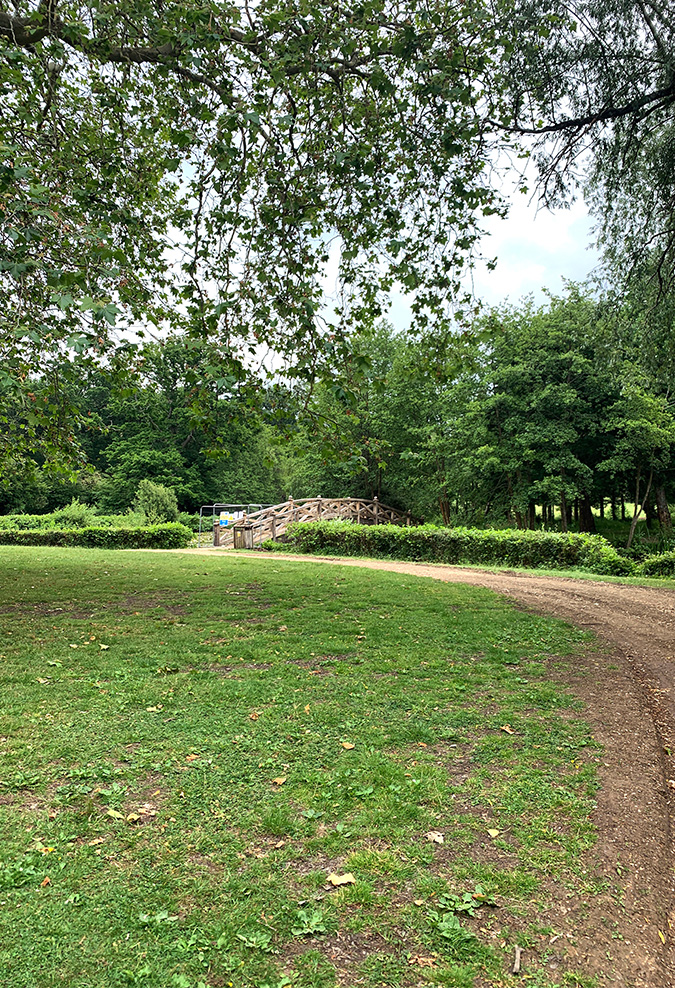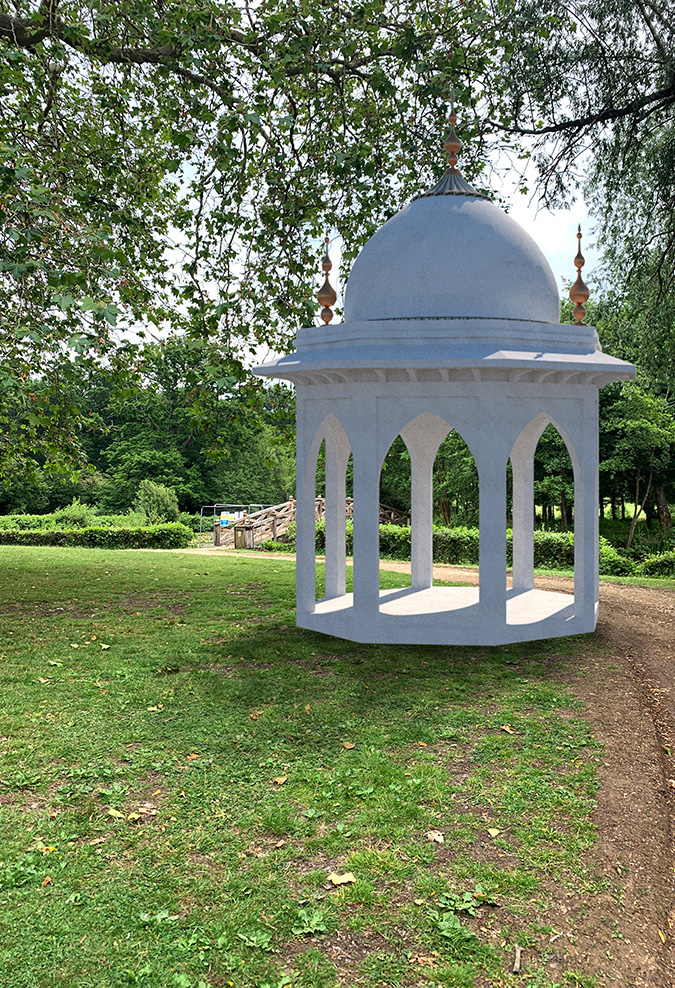We tend to think of kiosks as places to buy tickets, newspapers and snacks, but the word originally meant a small open-sided summer house for relaxing. The architectural term comes from Turkish, and well-travelled ladies and gentlemen of the 18th and 19th centuries would have seen them across the Ottoman Empire, which stretched from north Africa to the Balkans. The Turks endured the hot summers by creating shaded pavilions which caught the breezes and offered a lovely view.
Kiosk
A shady Ottoman corner Take me here now
Make sure your volume is on: "Sir George talks about the Turkish Kiosk"
You see, you really can travel the world just walking around my little gardens! This little beauty is a ‘kiosk’ – a Turkish word meaning a small pavilion that provides shade from the sun.
You see these pretty much everywhere that the Ottoman Turks have ever ruled or traded, from the borders of the Balkans to the far end of India, and no wonder…you may think the sun is hot here in Southamptonshire, but you wouldn’t believe how hot it can get as you go further south and east.
I know it is a bit small to be of any practical use, but that’s not really the point. For one thing, this isn’t the type of climate where you positively have to hide from the midday sun.
But the real point is that the Turkish kiosk is part of the overall view from the Look Out up on the hill. You’ll see what I mean when you go there…you look down into the valley and you see this little cluster of buildings – the boat house, the Chinese bridge, and the cottage in front, then the kiosk and the obelisk behind – and it looks like a proper landscape.
And if a gentleman has got the money to spare, and has the taste for it, then making a perfect landscape is a perfectly respectable way to spend his time and his fortune!
We don't have much of a description of Staunton's kiosk, Paintings suggest it had a domed roof and trellised walls, and would probably have had seating inside and perhaps a table. It was cleared away after Staunton sold the estate to make way for an ice house, which is still visible. Both Staunton and Stone had the same idea - how to make a hot summer day more bearable - but Stone opted for iced drinks rather than shady structures. Of course the ideal solution is to have an iced drink while sitting in a summer house, but you can't have everything...

